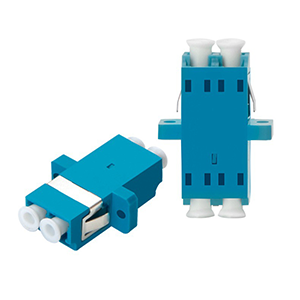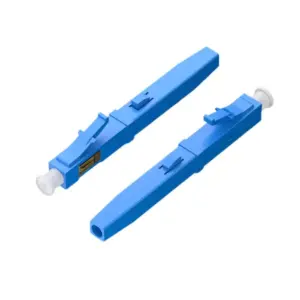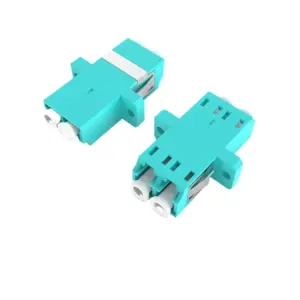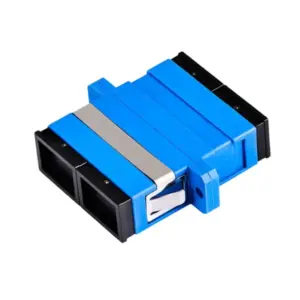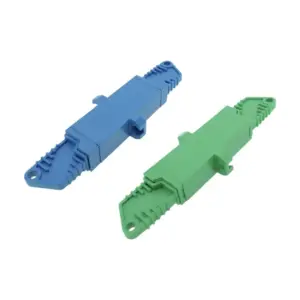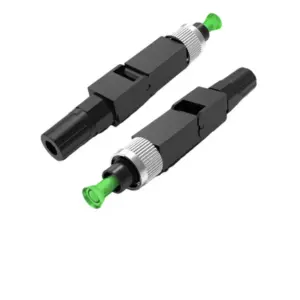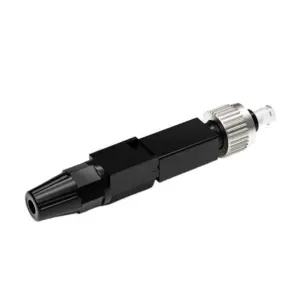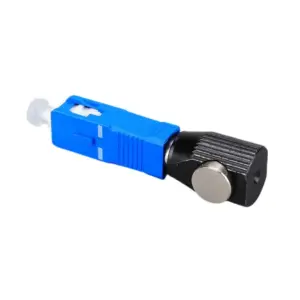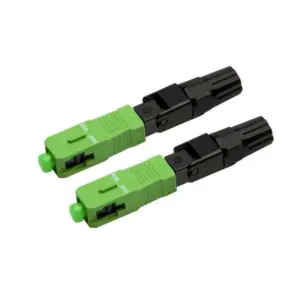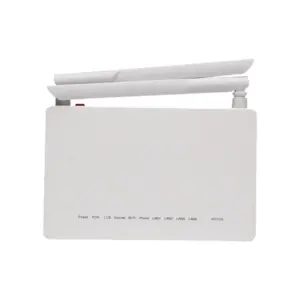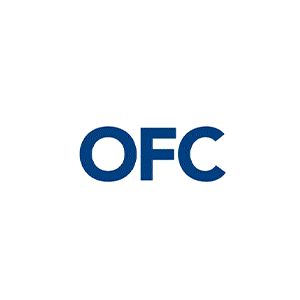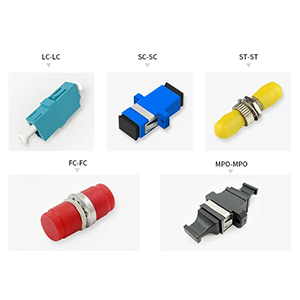Hello everyone, I am very happy to introduce to you today a key connector that plays an important role in high-speed optical fiber networks – LC optical fiber connector. As a key component to achieve high-density and high-performance optical fiber transmission, LC connectors show outstanding advantages in rack space utilization and cable management. In this article, I will give you a detailed analysis of the unique characteristics, wide application and selection points of LC connectors. I believe this will help you build an ideal optical fiber communication system.
LC fiber connector overview
LC (Lucent Connector) fiber optic connector is a miniaturized fiber optic connector that is widely used in the fields of fiber optic communications and data transmission. Its basic principles involve the connector’s structure, working mechanism, and key performance indicators such as low insertion loss.
The structure and working mechanism of LC connector:
LC connectors consist of two main parts: the insert (plug) and the adapter (socket). Inserts typically connect to the end of fiber optic cables, while adapters are used to connect to other devices or connectors. The LC connector adopts a plug-in design and has a miniaturized overall size.
In the insert of the LC connector, there is a ceramic or plastic ferrule with a tinted sleeve attached. This ferrule has a precision alignment sleeve for aligning the fiber. The bare fiber ends of the fiber optic cable are secured in the ferrule and aligned with the corresponding connector using precision alignment sleeves.
When two LC connectors are plugged into the adapter, the precise alignment sleeve between them enables precise alignment of the optical fibers. This alignment ensures minimal optical signal loss and maximum transmission efficiency. The connection between insert and adapter is achieved by a spring mechanism, ensuring a stable and reliable insertion.
The role of LC connectors in fiber alignment and signal transmission:
LC connectors play a key role in fiber alignment. By precisely aligning the sleeve, LC connectors ensure that the end face of the fiber is perfectly aligned with that of other connectors or devices, thereby minimizing loss and reflection of the optical signal.
In addition, the LC connector is also responsible for signal transmission. It provides a reliable physical connection that enables optical signals to be transmitted from one optical fiber to another, enabling optical fiber communication and data transmission. The design and structure of the LC connector ensures stable signal transmission and reduces insertion loss and return loss.
Key performance indicators: Low insertion loss is an important performance indicator of LC connectors. Insertion loss refers to the power loss of optical signals during the insertion of the connector. LC connectors achieve low insertion loss through precise alignment and optimized optical design. Typically, LC connectors have an insertion loss below 0.2 dB, which means there is only a small loss of signal power.
In addition to low insertion loss, other key performance indicators of LC connectors include return loss, durability, stability, etc. Return loss refers to the loss of optical signals reflected back at the connector interface. LC connectors usually have lower return loss to ensure reliable transmission of signals.
In summary, LC connectors enable optical fiber alignment and signal transmission by accurately aligning optical fibers and providing a reliable physical connection. Its miniaturized design, low insertion loss and optimized performance make it one of the most commonly used connectors in the field of fiber optic communications and data transmission.
What are the characteristics of lc fiber connector
LC (Lucent Connector) connector has the following main features:
- Compact size and high density features:
LC connectors have smaller sizes compared to other common fiber optic connectors, such as SC (Subscriber Connector) or ST (Straight Tip) connectors. Both its insert and adapter are relatively small, making the LC connector a compact connector.
Due to its miniaturized design, LC connectors are capable of high-density connections. LC connectors can support higher port density by providing more connection ports in the same panel or equipment space. This makes LC connectors very advantageous in applications that require large amounts of fiber optic connections, such as data centers, computer rooms, and communications equipment.
- Advantages include rack space utilization, cable management, etc.:
Due to its compact size and high density, LC connectors offer significant advantages in rack space utilization and cable management. They take up less space, allowing more connectors and fibers to be installed in limited rack or equipment space. This is important for environments that require a large number of connections to maximize the use of space resources.
In addition, due to the small size of the LC connector, the bending radius of its fiber optic cable is also relatively small. This makes it easier to route, install and maintain fiber in racks and cable management systems. The miniaturized design of LC connectors also helps reduce the clutter and congestion of fiber optic cabling and improves the efficiency and reliability of cable management.
- Differences from other interface types:
Compared with other interface types, LC connectors have some differences and characteristics:
- SC connectors are larger in size and lower in density than LC connectors. LC connectors can provide more connection ports in the same space.
- ST connectors are also larger and less dense than LC connectors. ST connectors are typically used for multimode fiber, while LC connectors are suitable for both multimode and single-mode fiber.
- The MPO/MTP connector is a multi-fiber fiber optic connector suitable for high-density applications. LC connectors are more common when connecting a single optical fiber, while MPO/MTP connectors are suitable for connecting multiple optical fibers.
Overall, LC connectors offer clear advantages in rack space utilization and cable management through their compact size and high density. LC connectors differ in size, density, and application range compared to other interface types, so connector selection needs to be evaluated based on specific needs and system requirements.
What are the application fields of lc fiber connector
LC (Lucent Connector) connectors are widely used in various scenarios in optical fiber networks, including data centers, telecommunications networks, and enterprise networks. The following are the applications of LC connectors in these scenarios:
Data center:The data center is a place that requires a large number of fiber optic connections, and LC connectors have become one of the most common connectors in data centers due to their compact size and high density. LC connectors can provide high port density, allowing data centers to support a large number of fiber connections and effectively utilize limited rack space. Use LC connectors for fast, reliable fiber optic transmission between servers, storage devices and network equipment in the data center.
Telecom network:LC connectors are also widely used in telecommunications networks. Optical fiber plays an important role in telecommunications networks as a transmission medium, and LC connector, as one of the standards for optical fiber interfaces, is used to connect optical fiber transmission equipment, optical fiber switches, optical fiber splitters and other equipment. Due to the miniaturized design of LC connectors, high-density optical fiber connections can be achieved in telecommunications equipment, providing high-speed data transmission and reliable signal transmission.
Enterprise Network:LC connectors are also widely used in enterprise networks. Enterprise networks need to support large-scale data transmission and high-speed communications, and LC connectors can meet these needs. It is suitable for connecting various network devices, such as switches, routers, servers, etc. Since enterprise networks often require flexible cabling and easy-to-manage cable systems, the LC connector’s compact size and ease of management make it an ideal choice.
LC connectors play an important role in realizing high-speed, high-density optical fiber transmission. As optical fiber transmission rates increase, such as 10Gbps, 40Gbps, 100Gbps or even higher speed requirements, LC connectors can provide low insertion loss and optimized signal transmission performance to ensure stable transmission of high-speed optical signals. At the same time, the high-density characteristics of LC connectors enable more optical fiber connections to be supported in a limited space, providing higher port density and data throughput.
LC connectors also play an important role in fiber optic network upgrades and expansions. LC connectors provide flexibility and scalability when it is time to add new fiber optic connections or upgrade existing fiber optic networks. They are easily compatible with other fiber optic equipment and connectors, making the upgrade and expansion process easier and more efficient.
To sum up, LC connectors are widely used in optical fiber network scenarios such as data centers, telecommunications networks and enterprise networks. Its compact size, high density, and importance in high-speed, high-density fiber optic transmission make LC connectors an ideal fiber optic connection solution.
What are the precautions for using lc fiber connector
There are some key considerations to note when selecting and using LC connectors. Here are some factors to consider:
Fiber type: Determine whether the fiber type used is single-mode (Single-Mode) or multi-mode (Multi-Mode). LC connectors are available for both single-mode and multi-mode fiber, but you need to make sure the connector is compatible with the type of fiber being used.
Network rate: Consider the transmission rate required by the network, such as 10Gbps, 40Gbps, 100Gbps, etc. Make sure the LC connector you choose can support the required speed and has corresponding performance specifications.
Environmental conditions: Consider the environmental conditions in which the connector will be deployed. For example, if the connector will be used in harsh environments, such as high temperature, high humidity, or corrosive environments, choose LC connectors with good durability and protective properties.
Reliability and performance requirements: Evaluate the reliability and performance indicators of LC connectors according to application requirements, such as insertion loss, return loss, durability, etc. Make sure the connector you select meets the required reliability and performance requirements.
Proper installation and maintenance methods are critical to the performance and reliability of LC connectors. The following are some installation and maintenance considerations:
Installation Notes:
- Check the cleanliness of the connector before installation to ensure it is dust-free and free of contamination.
- Make sure the fiber is cut and prepared correctly.
- Insert the connector gently, ensuring proper fiber alignment and avoiding excessive pressure.
- Use appropriate tools and methods for connector fixation to ensure a secure connection.
Maintenance precautions:
- Regularly check the cleanliness of the connector and use appropriate cleaning tools and detergents for cleaning.
- Avoid physical damage to the connector, such as excessive bending, pulling, or external impact.
- Regularly check connector performance indicators, such as insertion loss and return loss, to ensure they are within acceptable limits.
During the use of LC connectors, you may encounter some common problems and failures. Here are some common problems and how to fix them:
Excessive insertion loss: may be caused by bad connectors, damaged fiber, or incorrect installation. Solutions include replacing the connector, repairing the fiber, or reseating the connector.
Excessive return loss: Can be caused by bad connectors, incorrect fiber alignment, or contamination. Solutions include replacing the connector, realigning the fiber, or performing proper cleaning.
Unstable or disconnected connections: This may be caused by loose connectors, broken fibers, or incorrect installation. Solutions include reseating the connector, repairing the fiber, or reseating the connector.
Contamination and Corrosion: Contamination and corrosion can affect connector performance and reliability. Clean and inspect connectors regularly to avoid using inappropriate connectors in harsh environments.
In summary, selecting appropriate LC connectors and properly installing and maintaining them is key to ensuring the reliability and performance of fiber optic networks. Following proper installation and maintenance methods, and paying attention to common problems and troubleshooting measures, you can minimize connector failures and ensure the stability and reliability of fiber transmission.
Summary
LC fiber optic connectors are undoubtedly the key to high-speed fiber optic networks. Its compact size and high density make it popular in scenarios such as data centers and telecommunications networks, helping users efficiently utilize limited rack space and achieve neat and orderly cable management. Not only that, the excellent fiber alignment performance and low insertion loss of LC connectors also provide guarantee for high-speed, high-quality optical signal transmission.
We provide fiber optic connector products with a variety of specifications and performances to meet your needs in different application environments. If you have any questions or needs about LC connectors, please feel free to contact us for communication. Let us work together to build efficient and stable optical fiber network infrastructure and promote the development of digital transformation!
lc fiber connector FAQ
The key features of the LC connector include its small size, push-pull locking mechanism, and precision alignment. It is designed to provide a secure and reliable connection for optical fibers.
LC connectors are widely used in fiber optic networks, including Ethernet, Fiber Channel, and telecommunications applications. They are particularly popular in high-density environments like data centers and telecommunications equipment.
Compared to other connectors like SC or ST, the LC has a smaller footprint and utilizes a push-pull latch mechanism instead of a threaded or bayonet coupling. This makes it more compact and easier to connect and disconnect.
Yes, LC connectors are available for both single-mode and multimode fiber optic cables. The connector type is compatible with the specific fiber type being used.
The typical insertion loss of a properly installed LC connector is around 0.1 to 0.3 dB, which is considered low and acceptable for most fiber optic applications.
Yes, LC connectors are suitable for high-speed data transmission applications, such as Gigabit Ethernet and Fibre Channel. Their design and performance characteristics allow for reliable data transmission at these high speeds.
LC connectors are typically terminated on fiber optic cables using fusion splicing or mechanical splicing techniques. The fiber is precisely aligned and secured within the connector housing to ensure optimal signal transmission.
Yes, there are different variations of LC fiber connectors, such as simplex (single fiber) and duplex (two fibers) versions, as well as versions with different keying or color-coding for identification purposes.
Yes, LC connectors can be used in both indoor and outdoor fiber optic installations. Specialized outdoor-rated LC connectors are available that provide additional protection against environmental factors like moisture, temperature, and UV exposure.

